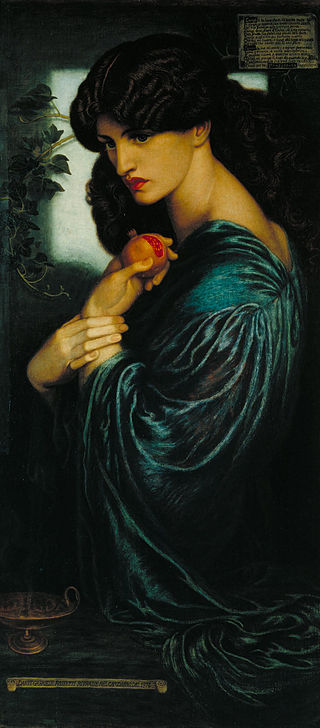Rossetti and the Mythological
Female
As a double major in Art
History and Classics, I’m always interested when the two fields (and my two
loves) come together and how that merger seems to change over time. In the mid-
to late-nineteenth century, one can find figures from classical mythology among
Pre-Raphaelite works and I find that fascinating – perhaps most notably because
when one thinks of the art of classical antiquity (thinking especially of Greek
architecture and sculpture), one thinks of an art in pursuit of the ideal,
working toward a perfection of form. The Pre-Raphaelites, on the other hand, rejected
the notion of the ideal and sought truth in the world around them (most adamantly
in their earliest stage), yet they continued this tradition of borrowing and
adapting for their overall movement and later, their own particular styles.

Rossetti, Proserpine, 1874 Rossetti, Mnemosyne, 1875-1881
An example of this can be seen in the art of Rossetti, some of whose later female figures – painted from real women – are inspired by Greek and Roman myth. Two pieces we’ve looked at in class (which set me on this train of thought), Mnemosyne and Proserpine, are both modeled by Jane Morris. She was a striking woman, beautiful in her own way and not necessarily so by Victorian or conventional standards – a common trait among Pre-Raphaelite models. Under Rossetti’s hand, previously idealized and in some cases practically uniform facial features of the past become unique and recognizable, and a living, breathing muse of the nineteenth century is inserted into an ancient context as an immortal goddess. This “doubling effect,” as Prettejohn terms it (page 205), gives each piece its impact.
Dante Gabriel Rossetti, Helen of Troy, 1863
Similarly, Rossetti depicts another contemporary mortal as the most (in)famous and beautiful mortal of antiquity. Helen of Troy, a piece I don’t believe we’ve seen yet in class, was modeled by Annie Miller. In the painting, she wears a necklace with a firebrand, a symbol of her lover Paris, while Troy burns in the background. According to the Walker Art Gallery website, “ἑλένας, ἕλανδρος, ἑλέπτολις,” a line from Aeschylus’ Agamemnon that I’ve recently had to translate in my Greek class, is actually inscribed on the back of the painting – “destroyer of ships, destroyer of men, destroyer of cities.” Again there is a focus on the individual woman in a sort of dual representation, a real and realistically imperfect face as the face that “launched a thousand ships.”
Rossetti’s choice then in painting these women as mythological figures is interesting. There is a level of Pre-Raphaelite truth, as Rossetti paints the model(s) before him and includes their distinctive features – yet because they are elevated in position within a mythological context, (and perhaps due in part to Rossetti’s romantic interest in both women,) one can see a possible attempt to create a kind of grounded ideal, arguably a modern and far more personal adaptation of the efforts of antiquity. For me, this potential connection between fields adds a new depth to these pieces and makes them all the more fun to study!






